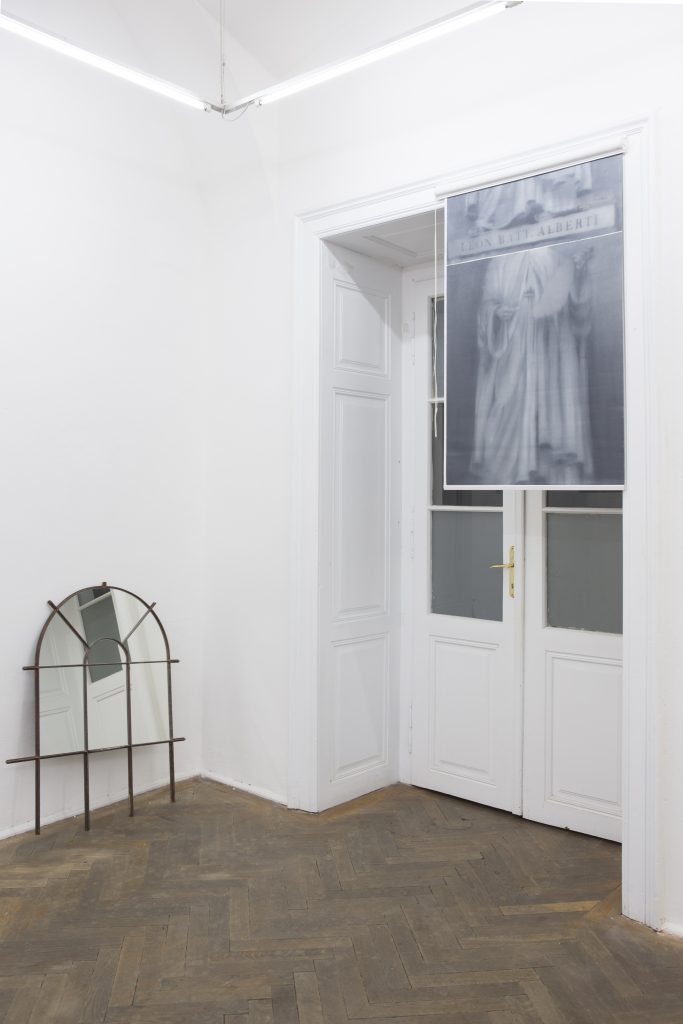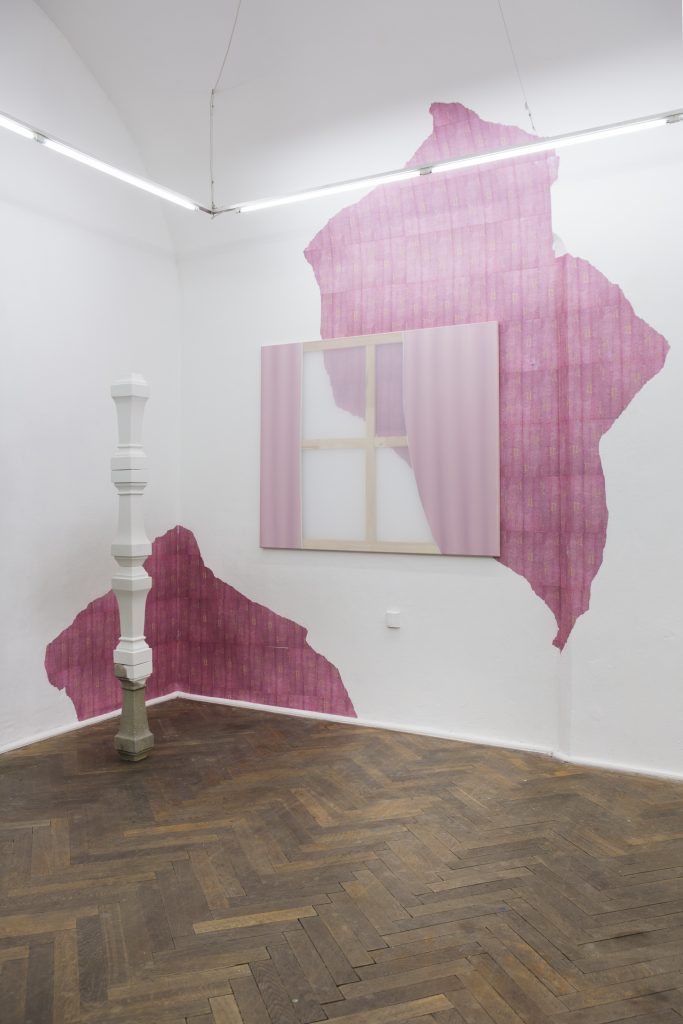Emilia Kina
Filip Rybkowski
INNOCENT EYES, WEAK ARM
Exhibition opening: 19. 12. 2019 / 18.00 hod. Exhibition's duration: 19. 12. - 31. 1. 2020
Method of production – method of destruction.
In today’s world, images work in a constant flow, “floating” through us, changing their form and meaning. They get lost and disappear, but often are closer than they seem to be.
Innocent eyes.
Saint Lucia, a virgin and a martyr changed her image so she could not be seen nor touched. In the iconography of the Catholic and Orthodox Church, she is depicted with eyes on a platter or with a twig in hand. If there is an innocent eye, without prejudice and foresight, then it is an eye functioning outside of the physical body, without any contact with the interpretative organ, innocent and unconscious.
Weak arm.
At the beginning of the 20th century, a piece of marble was unexpectedly found in an antique shop, representing the lost hand of Laocoon. The reconstruction of the sculpture was not good enough to place its original missing fragment. First, it was necessary to deconstruct the work. The Laocoon sculpture was accidentally discovered on January 14th, 1506, while working on the Felice de Fredis vineyard, located near the so-called Sette Sale in Rome. It lacked several elements, including the hand of the Laocoon character. Already in 1533, it was reconstructed in ceramics by Giovanni Angelo di Montorsoli, apprentice of Michelangelo, along with other fragments. The hand of Laocoon is/was almost pathetically stretched out in the struggle for life. It was almost half a century after the discovery of the missing part of the work when it was decided to renovate it. The original replaced the site of the reconstruction and changed the expression of the work and its perception – it made Laookón a helpless victim.
Kina’s and Rybkowski’s effort is to map the battlefield of images. By examining the relationship between the eye and the hand, they analyze the relationship between vision and action. They focus on the question of the impact of images and their role in building a notion between the image of the past and thinking about the future.
Emilia Kina (* 1990, Krakow) graduated from the Department of Painting and Photography at the Academy of Fine Arts (ASP) in Krakow. In her artistic practice, she naturally uses the acquired knowledge in both media and examines their mutual relationship. She is interested in the significance of the image, whose simple form is the result of complex problems. Individual realizations are based on theoretical reflection, especially on ancient painting and photography theory. The author’s works were presented at the Miejskiej Gallery in Gdańsk, Stefan Gierowskie Fundacja in Warsaw, BWA in Katowice or the Muzeum Sztuki Współczesnej MOCAK in Krakow.
Filip Rybkowski (* 1991, Szczecin) studied painting and photography at the Academy of Fine Arts (ASP) in Krakow, where he currently works as a Ph.D. student. In his work, he combines various media. He strongly refers to the history of art, the temporary nature of the work and its uniqueness, while he points out the question of the monument. The image and its cultural context occupy a key place in his theoretical reflection. The works of the author have been exhibited among others in the Muzeum Współczesnym Wrocław, the Gdańskiej Galerii Miejskiej, the Fundacji Stefan Gierowskiego in Warsaw, the Krakauer Haus Nurnberg.
Exhibitions of this gallery are supported by Slovak Arts Council.
Slovak Arts Council is the main partner of the project.














